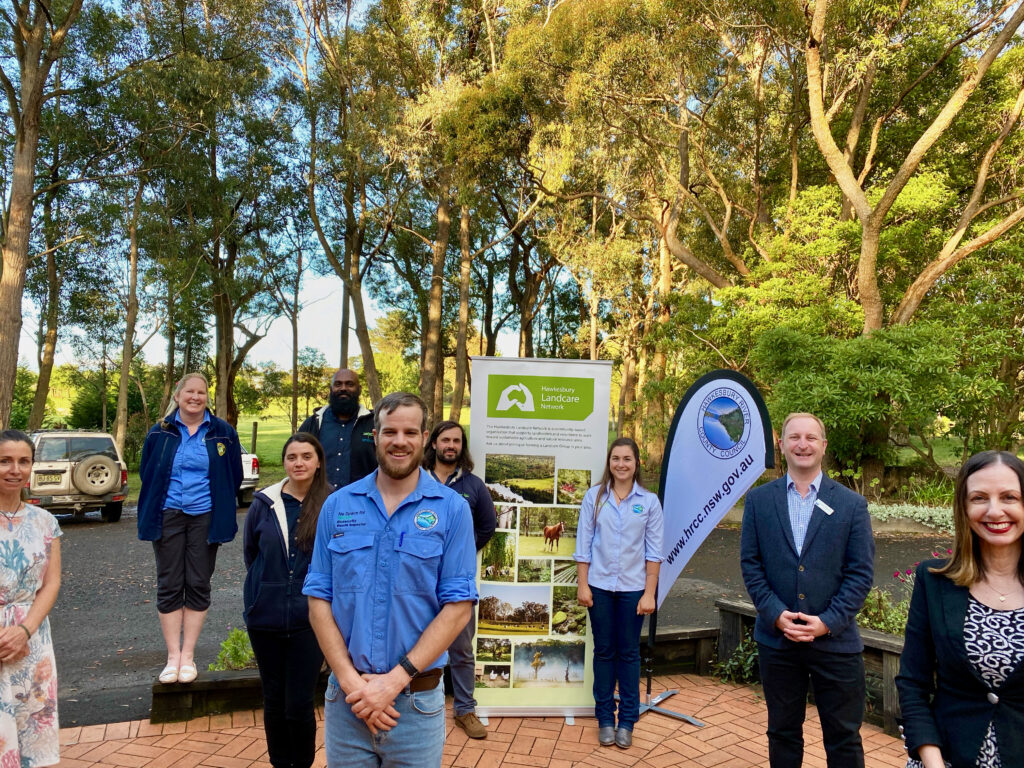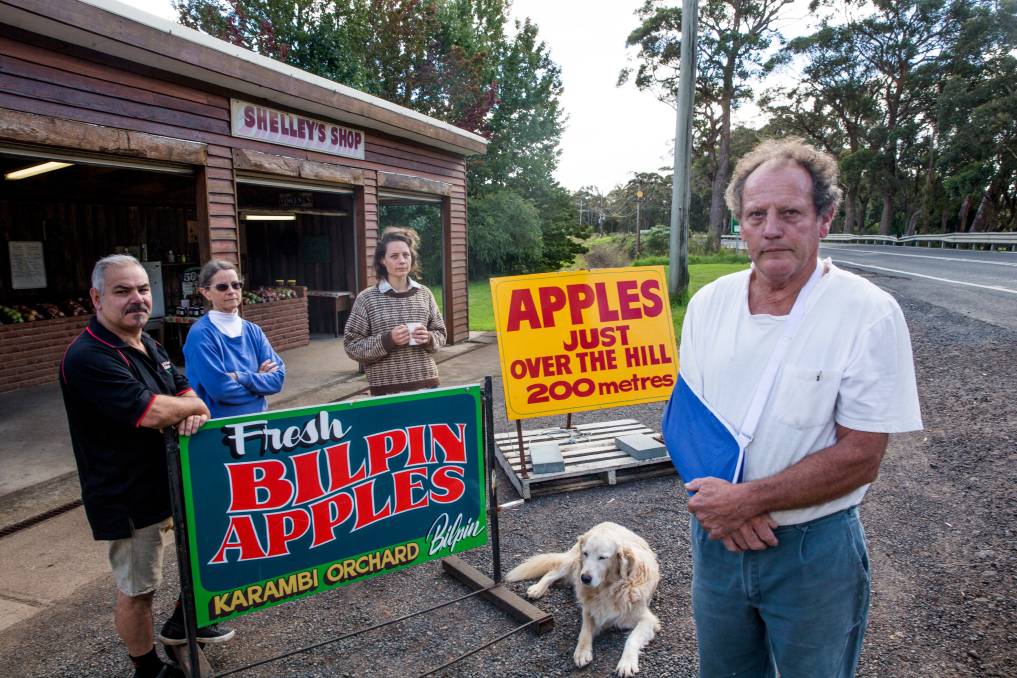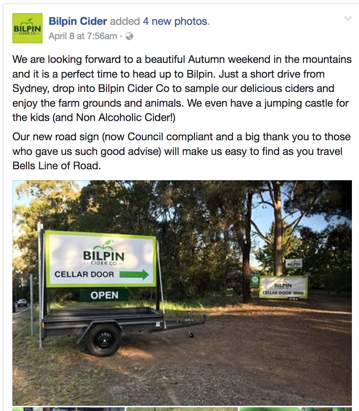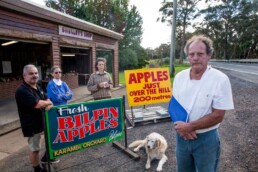Bilpin
How much land clearing should people be able to do for fire safety? The Rural Boundary Clearing Code
The Rural Boundary Clearing Code
The commentary here is in reverse chronological order. If you're interested, I suggest watching the videos in the order shown here.
February 2022 third go-around, and things get worse.
The "Rural Boundary Clearing Code". It came to Council for the third time last night.
Why is this so contentious? It might strike you as an obscure decision about land-management policy. But it disguises a far more important principle, and it's very much at stake in this new Council, so it's important to know what this is about.
Some people feel the massive bushfires we endured demonstrate we should allow people more freedom to clear their land for fire safety. Some people worry (and we were shown proofs) that this threatens habitats and that fire safety will be used as an excuse for some to just clear their land for other reasons. Others worry that the Code just won't do what its authors intended because of our local conditions.
All of these concerns are valid.
Passionate, honourable disagreements are why we sit as a Council of twelve to work through these issues. The solution is to consult the community and experts in the field, get informed, and then make considered decisions. Almost every policy Council adopts follows this process.
But not, apparently, this one.
This has been rammed through without any consideration or consultation – and especially with the RFS, who reminded us tonight of their own well-developed plan to improve fire safety. They're white-hot about the disrespect this lack of consultation represents. And that's why I've differed in my opinion with my Liberal colleagues, with whom I usually agree on other issues.
The issue is why we would adopt a policy with such far-reaching consequences for our land management – which has enormous implications for endangered species like Koalas, and on which opinions differ sharply concerning whether it will actually improve fire safety at all – without any consultation with the local RFS. And no resourcing of Council to do compliance and mitigate against mis-use of the Code. And without any thought of how Council should help landowners navigate their eligibility and be good stewards of their land. And without the ability to even measure the impact on tree-cover across the LGA when that could easily be remedied with new off-the-shelf mapping tools.
Frankly, it makes the rhetoric of people who frequently say they respect the RFS, and like to make much of saying they support Koala habitats, more than a little hollow. Worse, in the meeting tonight, debate was axed which cut off Councillors who were yet to speak to the chamber, despite having their 'zoom hand' up for half an hour. That was wrong. When we disagree, we shouldn't silence people just because you may not like what they might say. It's no way to run a respectful chamber, and I disassociate myself from those who use it as a tactic.
Look, ultimately it may be best if we adopt the Code. But we can't know because we haven't asked the right questions. And that's our job, so I don't apologise for speaking out.
The above video represents my remarks, but the full video of the Council debate is something I recommend you watch.
January 2022 - The new Council reverses its previous position and rams the Code through
Last October some of my colleagues tried to ram through the adoption of the "Rural Boundary Clearing Code", which would allow the clear-felling of up to 15,800 hectares of rural land where landowners assert such clearing is needed to improve fire safety.
I think that Council has a moral obligation to look at this area, given the loss of 65 homes in the Hawkesbury in the fires.
But balancing community safety with protection of the environment is challenging. It takes leadership, and nuancing the various issues and views, not ramming something through without consideration of the consequences.
That attempt last year failed.
Firstly, we had conducted zero formal consultation with our local RFS.
Secondly, it was clear that we needed to resource Council to measure the effects of this policy with geospatial mapping tools, provide guidance to landowners about the torturous eligibility criteria, and ensure we could conduct basic compliance and enforcement. We had no knowledge of a single other Council taking up the voluntary adoption of this code and what that experience looked like for them, and many local experts told me that they were either opposed, or took a "yes, but" approach contingent on these basic precautions.
I advanced an alternative motion to get Council to conduct that consultation and resourcing, and I got it passed. The report would have come back to Council this year.
However, the complexion of the Council chamber has changed, and on Tuesday my Liberal colleagues again tried to ram summary adoption of the code through. This time, they had the numbers.
So that's it. No consultation. No resourcing for partnering with landowners. No resources for mapping, compliance or enforcement.
Oh, and no takebacks. Once we're in, we're in for good.
I think of this as a massive slap in the face for our local RFS, who are free to be for or against this, but who would have at least been accorded the courtesy of being *asked*. So much for the oft-claimed respect for our RFS.
I've always claimed that it's possible to be a good Conservative, and a good Conservationist. It's a pity that this looks nothing like that.
Environmentally conscious voters in the Hawkesbury, and if I might suggest, across the seat of Macquarie ought to keep their own counsel about whether this looks like the kind of representation they want
In favour of the summary adoption of the code was:
Mayor Conolly, Clr. Richards, Clr. Reardon, Clr. Veigel, Clr. Sheather, Clr. Dogramaci. Passage was ensured with the casting vote of the Mayor after a 6-all deadlock.
Original October 2021 commentary:
At last night's Hawkesbury City Council meeting we considered a thorny question: How much should landowners be allowed to clear their land to protect themselves from bushfires?
Helping Bushland Regeneration in Bilpin

I was pleased to launch the Blue Mountains Shale Cap Forest Project at Bilpin today, as the Chairman of the Hawkesbury River County Council.
The Shale forests stretching across Berambing, Bilpin and Mountain Lagoon are State listed endangered ecological communities, even more threatened in the aftermath of the fires. They are typified by an unusually rich diversity of plant, insect, and vertebrate species.
People forget that the Hawkesbury has more of the Greater Blue Mountains World Heritage Area within its boundaries than the Blue Mountains LGA.
My first paid job as a teenager was at Dutch's farm at Mountain Lagoon. I still remember being captivated by the size of the huge Angophoras fringing the property. It's satisfying to now lead an organisation working for their preservation.
This initiative is funded over a multiple years to identify and map the ecology, educate and incentivise landowners, provide on the ground help to assist in bush regeneration, conduct weed control, and track progress.
The project will aim to found a dedicated Bilpin Landcare group to carry the work forward, and the locals who attended today were curious and positive about it.
This grant (over $100K) is the first-time a private property engagement that focuses on conservation and land management has been done on this scale. Over 400 private properties have been contacted covering over 2,835 hectares in the Hawkesbury.
It's also great to see this is a team effort between Blue Mountains City Council, Hawkesbury River County Council, Hawkesbury City Council, the Hawkesbury Landcare Network, Greater Sydney Local Land Services, and the NSW Environmental Trust.
If you want to get on board, contact HRCC.
Bilpin businesses need help from Council, not fines

Sean Prendergast, founder of Bilpin Cider, is on the phone with me, and he's livid.
"$6000! Council fined me $6000 for having a sign on a trailer outside my business!"

My ancestors were orchardists for over a century, at Glenhaven, and so I'm immediately sympathetic.
What's worse, he tells me, is that in previous interactions with Council, he had formed the view that his current signage was compliant, after an earlier shot across the bow relating to "approach signage", meaning signage placed along Bells Line of Road to let drivers know about approaching businesses and giving them the opportunity to slow down.
As it happens, I had already been speaking to Wayne Tapping, of Wildwood Gardens, His situation is worse, as his venue and café is on Powells Rd, just off Bells Line. "Without signage on the corner to let people know where we are, our business drops by more than half" says Wayne.
And what did Council do with his A-frame signs? They impounded them at Wilberforce, and told him that if he picked them up before 5pm, they would waive the $213-per-sign fine.
Knowing this, the story that appeared in the Gazette two days ago, Orchardists Reel as signs prohibited - rules cruel Bilpin orchards and food outlets, is entirely unsurprising, and something needs to be done about it.
The problem is that the rules governing signage in our city are too inflexible. No one wants ugly signage in our already built-up areas, and the rules are there for good reasons. That said, some strange things still slip through. The Windsor Holden building in Macquarie St Windsor is a monstrosity, but I shall move on...
But businesses in Bilpin need every support they can get from Council, not $6000 fines. Under the current rules, they aren't even permitted A-Frames (which require a form to be lodged and a $119 fee), because such signs are limited to business and industrial zones. The farm sheds most orchardists sell from are not considered business areas and are zoned "Rural". Even signs on their own properties can't be bigger than 0.75m², and higher than 2.5m above the ground. Good luck seeing that, barrelling along Bells Line at over 80km/h. Worse, our current LEP doesn't permit approach signage at all. I'm sympathetic to the argument that approach signage improves road safety by giving potential customers time to make a choice, slow down, and look for the business coming up. So it's clear that rules that work well in other places, are not working well in Bilpin.
Council's current response is to suggest that Bilpin business make better use of Social media. This is more than a little dismissive, and it isn't good enough. As the Gazette article points out, the number of orchardists in Bilpin has dropped from over eighty in the 1980s to ten today, and all of them rely on direct sales to some degree. The orchards in Bilpin are a key part of the agricultural, social and tourist fabric of the Hawkesbury. We shouldn't let them die.
When asked by the Gazette, Council says that "If business operators request that Council look into a signage policy, then Council can look into developing a signage policy for businesses around Bilpin area to provide more guidance. Until such times the current policies remain in force."
I think we need to go beyond this. I want Council to take the initiative and develop a signage policy for Bilpin that balances the needs of those local businesses, draws the tourist trade, and yet is mindful of road safety and the aesthetic of our rural landscapes. Compliance to local ordinances and planning rules is important, but Bilpin businesspeople need our help. People like Neville Julian, and Shelley Julian, and Sam Ramaci, and Sean Prendergast, and Wayne Tapping, and many others would be entitled to think that, on current form, they aren't getting it.
I have reached out to my Councillor colleagues on this matter and so far I have received a very positive response. Stay tuned.


